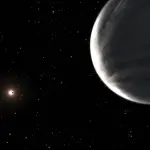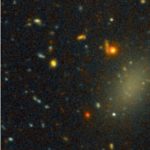Key Takeaways:
- Ring galaxies are exceptionally rare and feature a unique structure with a central core, a void, and an outer ring of stars.
- They are often found in isolated regions rather than within dense galaxy clusters.
- Previous explanations, such as planetary nebulae or galaxy interactions, have been debunked.
- Recent observations suggest that ring galaxies form as a result of collisions with gas-rich spiral galaxies.
- Some anomalies, like Hoag’s Object, challenge current theories.
In the vast expanse of the cosmos, where billions of galaxies dot the celestial canvas, a peculiar cosmic rarity has puzzled astronomers for decades: the ring galaxy. Unlike their more conventional counterparts, ring galaxies possess a strikingly unique structure that sets them apart. They are characterized by a central core of mature stars, a conspicuous void, and an outer ring of vibrant, young stars, presenting a cosmic enigma that has defied easy explanation.
These cosmic enigmas are not evenly distributed throughout the universe. Instead, they tend to prefer isolation, often found in regions far from the bustling galaxy clusters. This preference for solitude has only deepened the mystery surrounding them, as their rarity and seclusion make them difficult to study.
Over the years, various theories have been put forward to account for these strange celestial objects. However, one by one, these explanations have been debunked. They are not planetary nebulae, often featuring rings around dying stars, as ring galaxies consist primarily of stars rather than gas and ejecta from a single, dying star. Nor do they arise from interactions between a young galaxy and an older, massive one at the center. The age of the stars in the outer rings and the shapes of the rings themselves contradict this notion. Gravitational lensing, where massive objects bend and magnify background light, also fails as an explanation, as ring galaxies exhibit distinct populations of stars in both the central and ring regions, suggesting a single galaxy with two different stellar populations.
Recent observations of ring galaxies, including examples like AM 0644-741 and the Cartwheel galaxy, have offered valuable insights into their nature. These observations have unveiled intricate details, such as dusty regions silhouetted against the larger ringed feature, indicating ongoing star formation and unequal density regions within the galaxies. Additionally, pinkish regions within the blue rings hint at the presence of ionized hydrogen, a hallmark of active star-forming regions.
One crucial revelation from these observations is the role of galactic interactions in the formation of ring galaxies. It appears that these enigmatic structures emerge when a gas-rich spiral galaxy collides with another galaxy, setting off a chain of events. The collision causes ripples in the gas, triggering waves of star formation on the outskirts of the galaxy. This process also depletes the central region of gas and triggers the formation of a ring-like structure. This explains why ring galaxies are often found in isolation; they require a gas-rich environment to kickstart the process.
Despite these advances in understanding, one notable outlier remains: Hoag’s Object. This original ring galaxy continues to challenge astronomers with its peculiar characteristics. Its core and ring share similar velocities, indicating a subtle formation process. Strangely, no evidence of an interloper galaxy or fragments has been found nearby, adding another layer of complexity to the puzzle.
While mysteries persist, the study of ring galaxies has come a long way. The prevailing model of their formation through galactic collisions has provided a framework for understanding these cosmic anomalies. As technology and data collection methods advance, it’s likely that the remaining enigmas will be unraveled, underscoring the remarkable progress made in comprehending the intricacies of the universe and the fascinating stories written in the stars.


